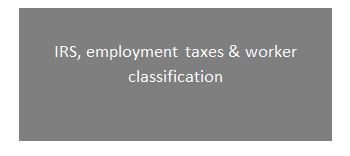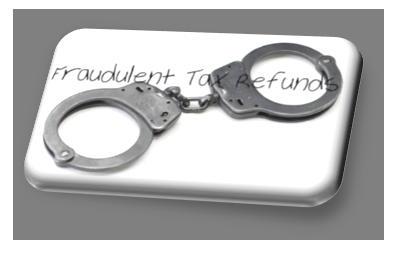The IRS estimates that individual taxpayers underreported their income tax on average by $245 billion each year for tax years 2011 to 2013 (See IRS Publication 1415). This underreporting is the largest component of the tax gap—the difference between the amount of taxes owed and taxes paid timely and voluntarily.
There has been a great deal of debate concerning the impact the Inflation Reduction Act (“IRA”) will have on low to middle income taxpayers, including wage earners and small business owners. According to the Biden Administration and the media pundits, we are expected to believe that spending $80 Billion on hiring 87,000 new agents and beefing up compliance and enforcement initiatives will only affect those whose incomes exceed $400,000. Better think again.
Questionable tax legislation is not limited to Democrats. Let us not forget Bush Senior’s famous words: “Read my lips, no new taxes.” Irrespective of political affiliation, history tells us, that changes in the Internal Revenue Code and tax policy have done little, if anything, to protect low and middle income wages earners and small business owners from IRS scrutiny. The additional funding for the IRS will particularly affect self-employed taxpayers, who will be the first on the IRS hit list.
The Biden Administration’s claims that the new and improved IRS will focus their attention on Taxpayers earning more than $400,000 is debunked by a number of reliable sources as well as historical audit data.
The Congressional Budget Office (“CBO”) in a Report entitled: “The Effects of Increased Funding for the IRS,” concluded that IRS funding under the IRA will lead to more audits and enforcement measures, and higher taxes for families making less than $400,000. The CBO’s findings directly contradict President Biden’s claim that taxes for those making less than $400,000 will not increase a “penny.” According to the CBO, the IRS funding would result in at least $20 billion of the total projected revenue being collected from lower and middle-income earners and small businesses.
The Biden Administration’s claim that the new funding will only affect taxpayers earning over $400,000 is a deliberate attempt to deceive the public and is further belied by the fact that 50 Senate Democrats voted against an Amendment offered by Mike Crapo (R-ID). The Crapo Amendment would have protected lower and middle income American taxpayers against new audits by the IRS. If the new legislation is indeed limited in scope to taxpayers with incomes in excess of $400,000, why did the Democrats unanimously reject the Amendment?
Further, in its Report, the CBO comments related to the consequences associated with the Democrat’s rejection of the Crapo Amendment strongly suggest that the IRS will target low and middle income taxpayers. The CBO concluded that if the Republican Amendment passed, the projected total revenue contained in the IRA would be reduced by at least $20 Billion. As such, $20 Billion of the total projected revenue in the amount of $124 Billion would come from an increase in the number of audits of low and middle income taxpayers.
The CBO also concluded that if audit levels return to the historical levels in 2010, lower and middle income earners could face an increase of as many as 710,00 additional audits.
These revelations should come as no surprise given Biden’s penchant for lying to Americans.
The Biden Administration’s true intentions are further evidenced by House Budget Committee Republican Leader Jason Smith’s (MO-07) comments. Smith maintains that Americans earning less than $200,000 are 80 percent more likely to be targeted by the IRS based upon Secretary Yellen’s historic audit levels.
In addition to the CBO Report, a recent analysis conducted by Joint Committee on Taxation, an independent Congressional body is further evidence that low to middle income taxpayers will be targeted by the IRS. In its analysis, the Committee concluded that 78 to 90 Percent of the money raised from under-reported income would likely come from those making less than $200,000 a year. The non-partisan Committee further maintains that nearly half of the audits would affect taxpayers making $75,000 or less and that only 4 to 9% would come from those making more than $500,000.
In addition, to the CBO and the Joint Committee’s findings, there is evidence that the IRS has historically focused their audit efforts on low and middle income taxpayers.
In a recent Report by the Government Accountability Office (“GAO”) entitled: “Trends of IRS Audit Rates and Results For Individual Taxpayers By Income,” the GAO found that for the years 2010-2021, the majority of additional taxes IRS recommended from audits came from taxpayers with incomes below $200,000. According to the GAO, the higher audit rates for lower income taxpayers is attributable to the fact that the average number hours spent per audit for the period studied was stable for those earning less than $200,000, but the number of hours almost doubled for those earning over $200,000.
The explanation offered by the IRS is that higher income audits are generally more complex, resulting in additional time spent per audit. However, the IRS explanation does not tell the whole story. Taxpayers with incomes exceeding $200,000 are more likely to be represented by a tax attorney, CPA or enrolled agent. Taxpayers who are represented invariably increase the number of audit hours, particularly in cases where a genuine tax controversy exists.
Moreover, contested cases involving taxpayers earning more than $200,000 do not necessarily result in the assessment and collection of additional tax revenue. Hence, low and middle income taxpayers will be expected to make up the shortfall.
Historically, audits of the lowest income taxpayers, in particularly those claiming the Earned Income Tax Credit (“EITC”) have resulted in high amounts of recommended additional tax per audit hour. This is due to the fact that EITC audits are pre refund audits, which are conducted through correspondence and generally require less time.
According to the Treasury Inspector General for Tax Administration (“TIGTA”) in a Report entitled “Trends in Compliance Activities through Fiscal Year 2019, “ audit rates declined 44% between 2015 and 2019, due to attrition and increase in the number of cases transferred. Nevertheless, TIGTA noted that, despite IRS budget, there was only a 33% drop in audits for low income taxpayer claiming the EITC compared to 75% for individuals with incomes of $ 1 million or more.
In its report, the GAO stated that because the no change rate has generally decreased because of fewer audits, the IRS tends to select returns for audits that have the highest results in changes. ( i.e. low hanging fruit). The GAO also points out that since 2010; the average number of audit hours has more than doubled for returns with incomes of $200,000 and above.
The projected revenue by the current Administration is based upon hiring 87,000 new agents, IT improvements and additional compliance and enforcement initiatives. However, the projections fail to take into consideration the fact that new auditors require training and further fail to consider the learning curve. In its report, the GAO noted that new IRS agents must spend additional hours conducting research in connection with tax law changes. Further, the projected revenue does not take into consideration the effect retirement of existing IRS personnel will have on bringing the new crop of agents up to speed. Consequently, many, if not most, new hires will be assigned to simple cases involving low to middle income taxpayers.
The current Administration’s claim that only taxpayers who earn in excess of $400,000 will be the subject of IRS scrutiny is, at best, disingenuous, and more probably a deliberate attempt to deceive U.S. taxpayers. The CBO, Joint Committee on Taxation, GAO and TIGTA Reports as well as historical data make clear that low and middle income taxpayers will not escape IRS scrutiny.








